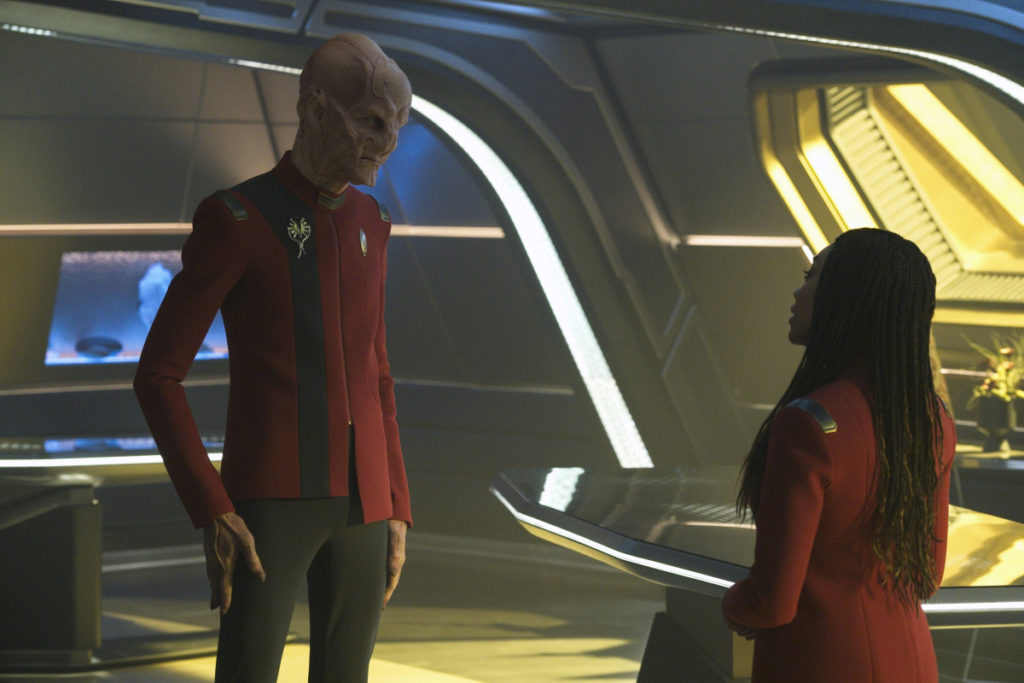
Spoilers ahead: this post contains spoilers for the first 4 episodes of Star Trek: Discovery Season 4.
So far, the fourth season of Discovery has given us a lot to chew on. Michael is captain of Discovery, the Federation is rebuilding and has a new president, Book is reeling from the destruction of Kwejian, and Tilly is heading off to teach at Starfleet Academy. But one thing I’d like to see more of is what’s happening on Kaminar.
Indeed, the Kelpiens have had their stories cut short more than once over the course of the series. Back in season two’s “An Obol For Charon,” Saru survives vahar’ai, disproving the Kelpiens’ belief that the condition is fatal and calling into question the species’ historical role as prey for the Ba’ul. We also learned that there was a time in which the tables were turned, and the Kelpiens were the predators, nearly driving the Ba’ul to extinction.
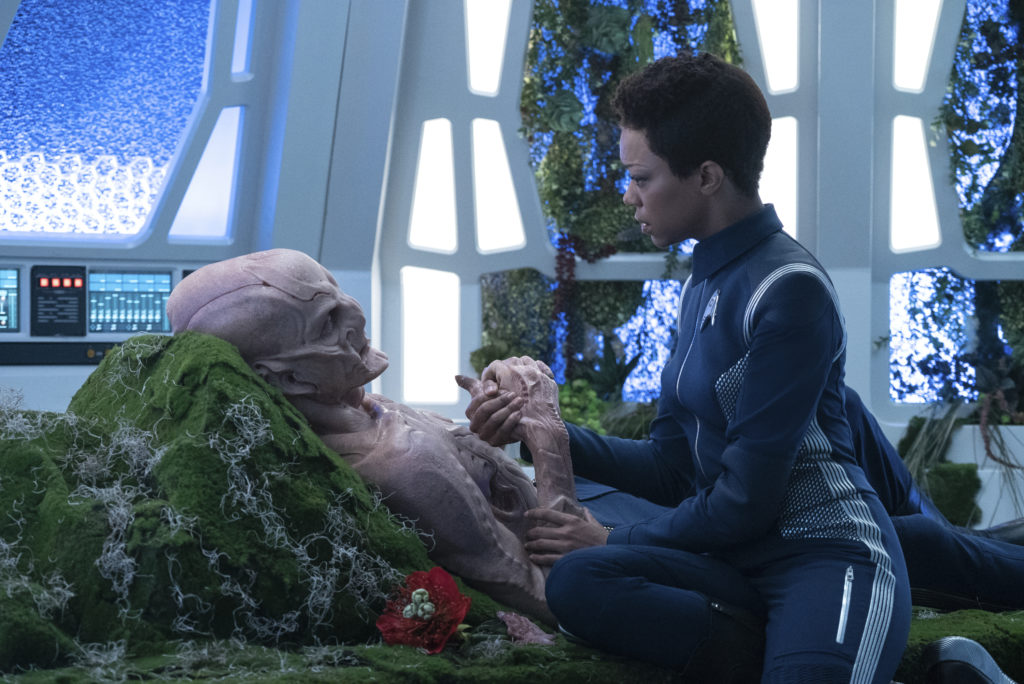
So the task for both species, at that point in the series, was to learn to live together in some sort of peace. And in fact, the Kelpiens needed to reframe their entire worldview, now that Saru has proven that there is no biological need for them to spend their entire lives in fear. This is a massive cultural shift for both the Kelpiens and the Ba’ul.
Seeing a species that has been taught over generations to live in fear learn to become more confident and daring, as Saru himself does, could have made for very rich storytelling. And yet we don’t get to see that in either season two or three. I would have liked to have seen an episode or two – or at least a Short Trek – that dealt with the enormous social and cultural ramifications of Saru’s discovery for the Kelpiens. But that thread of the story is just dropped, for the most part.
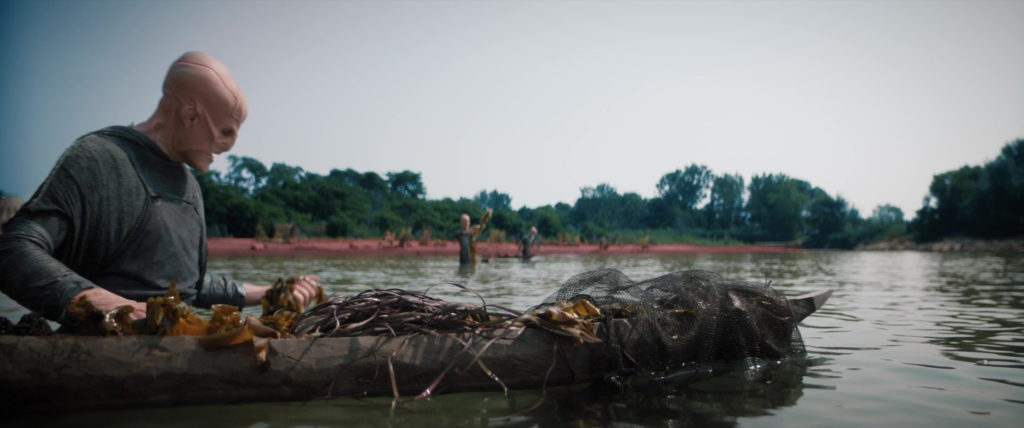
Of course there was the Short Treks episode “The Brightest Star.” But that dealt with Saru’s experience in a more personal way and didn’t give us the wider look at Kelpien society that I’d like to have. And there’s the novel Fear Itself, which stars Saru but is set largely on the Shenzhou.
At the end of season three, the crew jumps nearly a thousand years into the future, so any opportunity to watch the evolution of Kelpien society has been lost. This is particularly frustrating because, in the season four premiere, “Kobayashi Maru,” we see the Kelpiens and the Ba’ul discussing the possibility of rejoining the Federation together. So the two species must have come to some kind of agreed upon arrangement, but how did it happen?
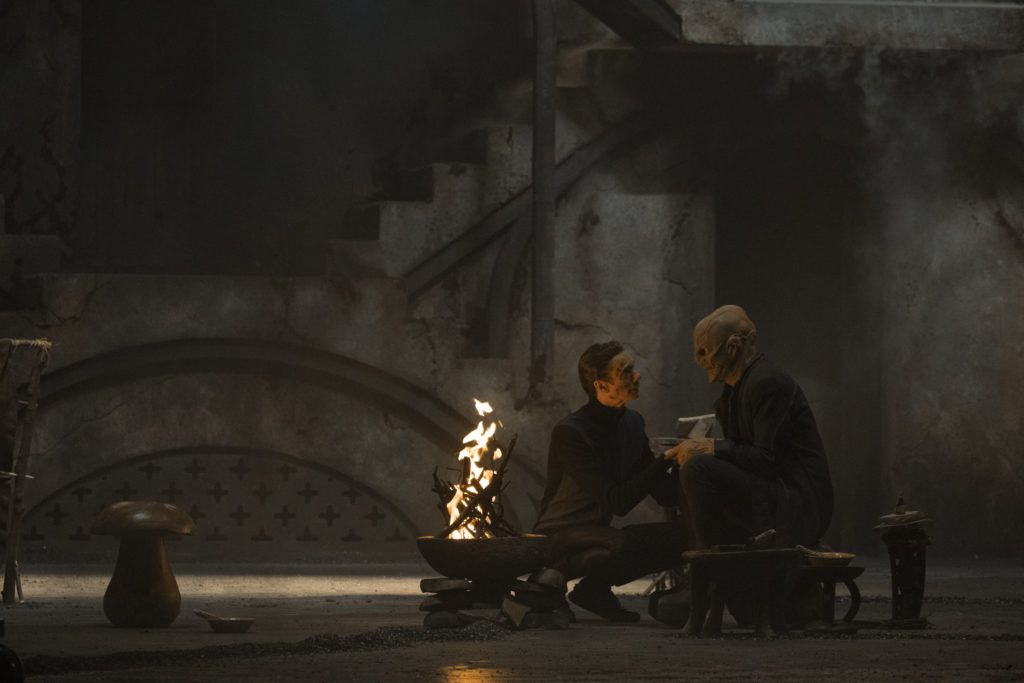
So far in season four, it seems like the Kelpiens’ story is being sidelined yet again. At the end of season three, Saru had decided to spend some time on his home planet.In “Kobayashi Maru,” he tells their council that he believes rejoining the Federation and the galactic community would greatly benefit their world. But after a conversation in which Su’Kal encourages him to return to the Federation, Saru heads immediately back to Discovery. There are evidently familiar themes going on on Kaminar, like the decision to venture into something new and expand the scope of their people’s existence, rather than stay isolated out of fear. Had Saru stayed with the Kelpiens a bit longer, we could’ve watched this fascinating species take important steps in its growth. Instead, we’re missing out on the opportunity to see how the Kelpiens evolve and move forward.
The Kelpiens are an interesting species because their struggles embody so much of what Starfleet – and Star Trek at large – is about: overcoming fear and uncertainty in order to learn, grow, and have new experiences. And their journey is one that I think a lot of viewers can relate to. For me personally, Saru’s journey – the way in which his life expands once he learns he doesn’t have to be controlled by his fear – is one of the most relatable character arcs on the show. And I think exploring the evolution of the Kelpiens in a more in-depth way is something that would resonate deeply with a lot of viewers.
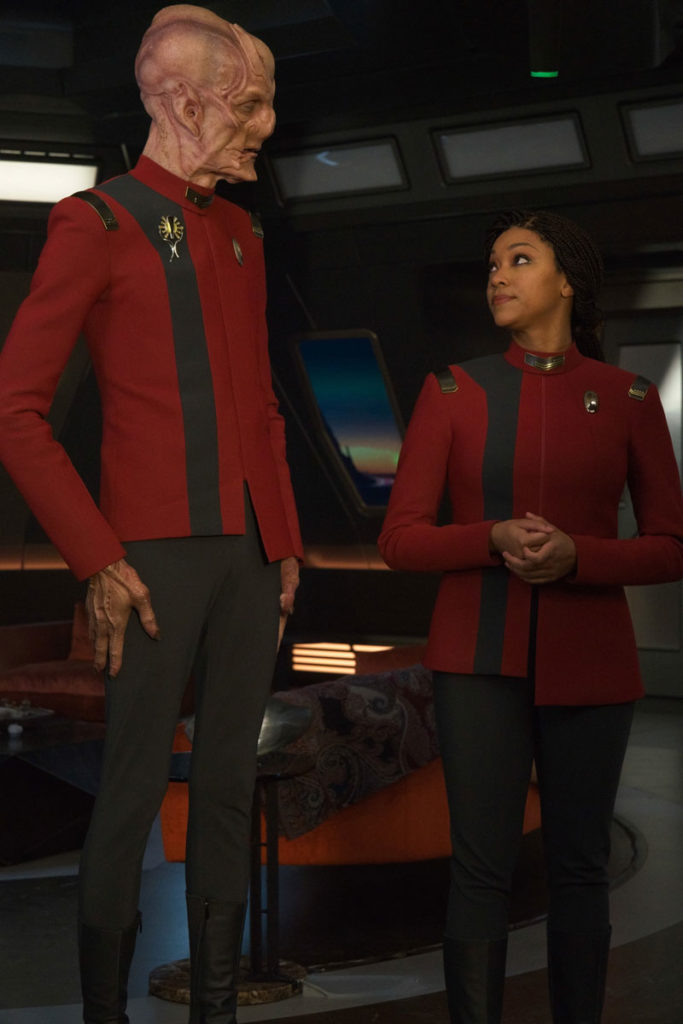
Of course, each season of Discovery has multiple threads and arcs to follow, and has to choose its priorities. But hopefully we’ll see more of the Kelpiens’ story on the show, either in regular episodes or a Short Trek. But if not, there is certainly enough compelling material here to fill a novel or comic book series. And I for one will be on the lookout for more Kaminar content in one form or another.